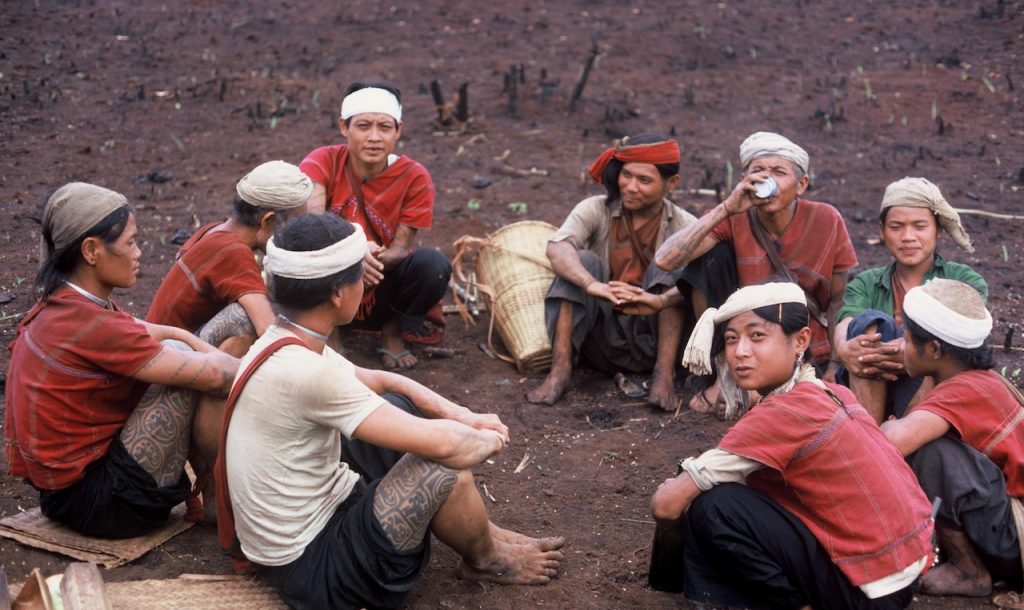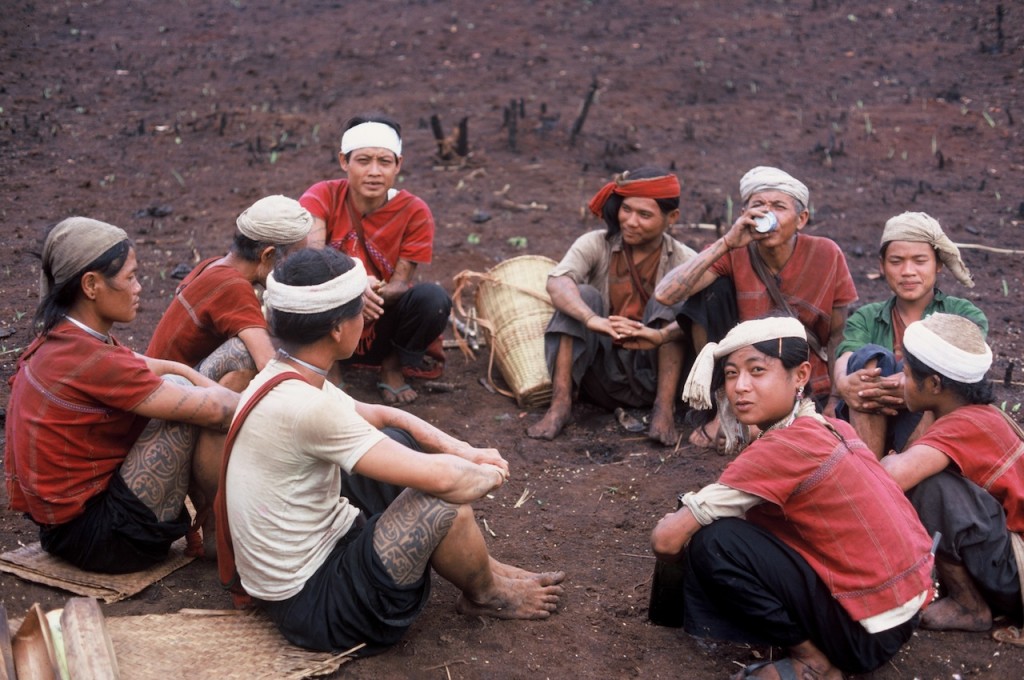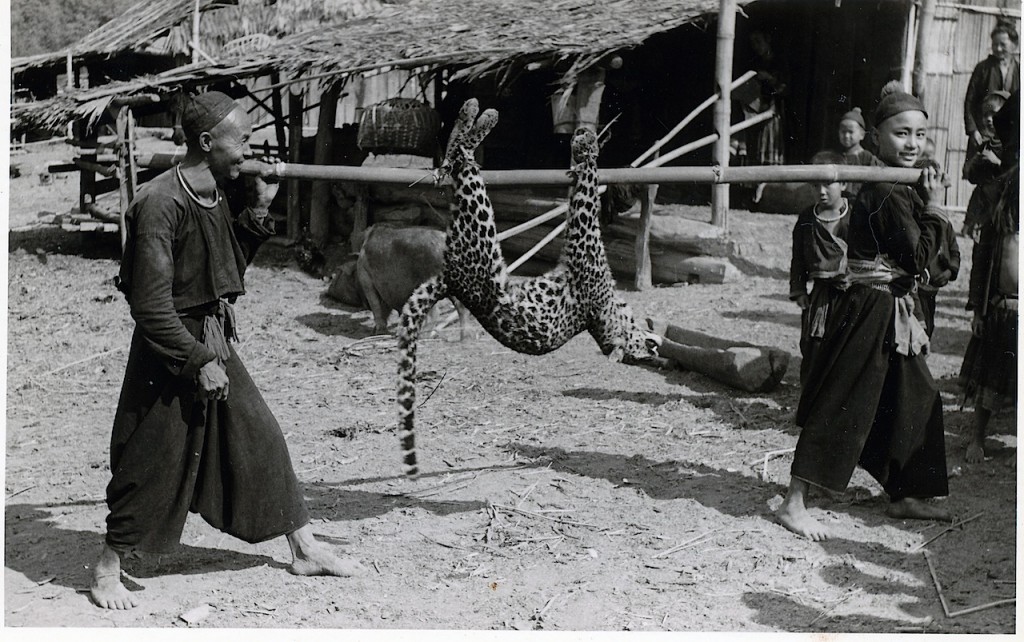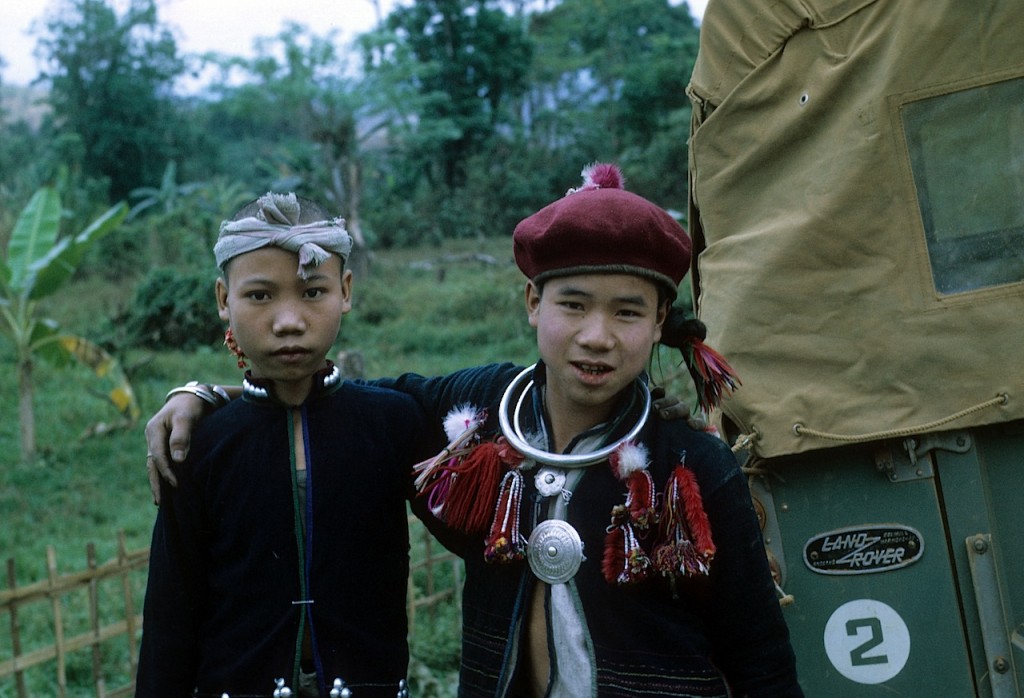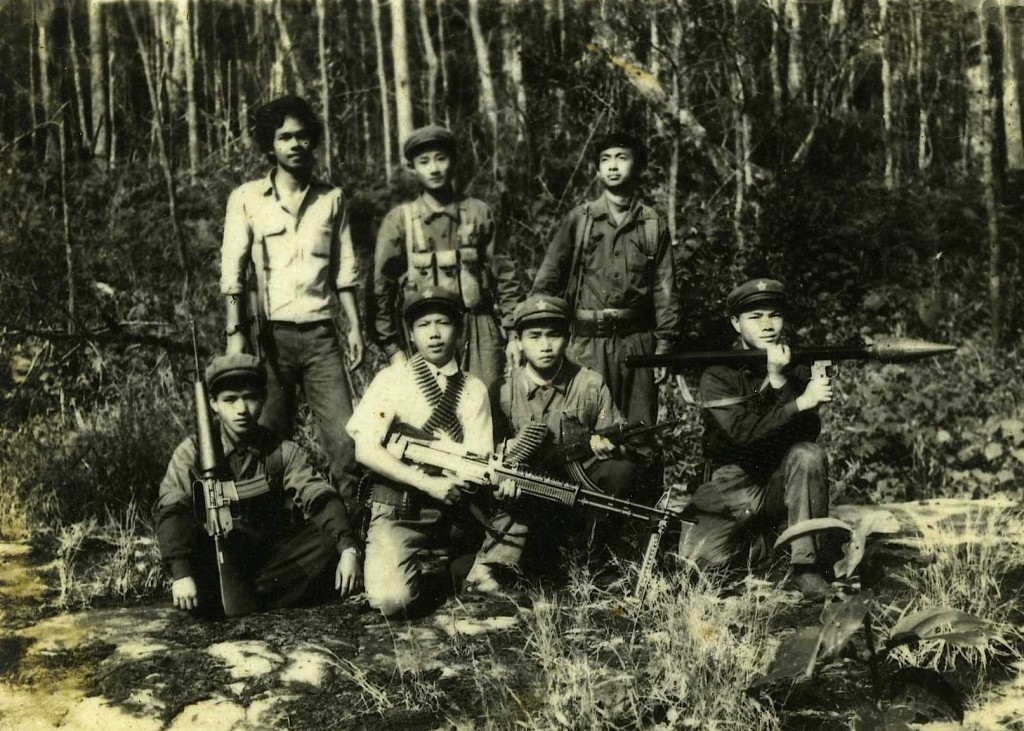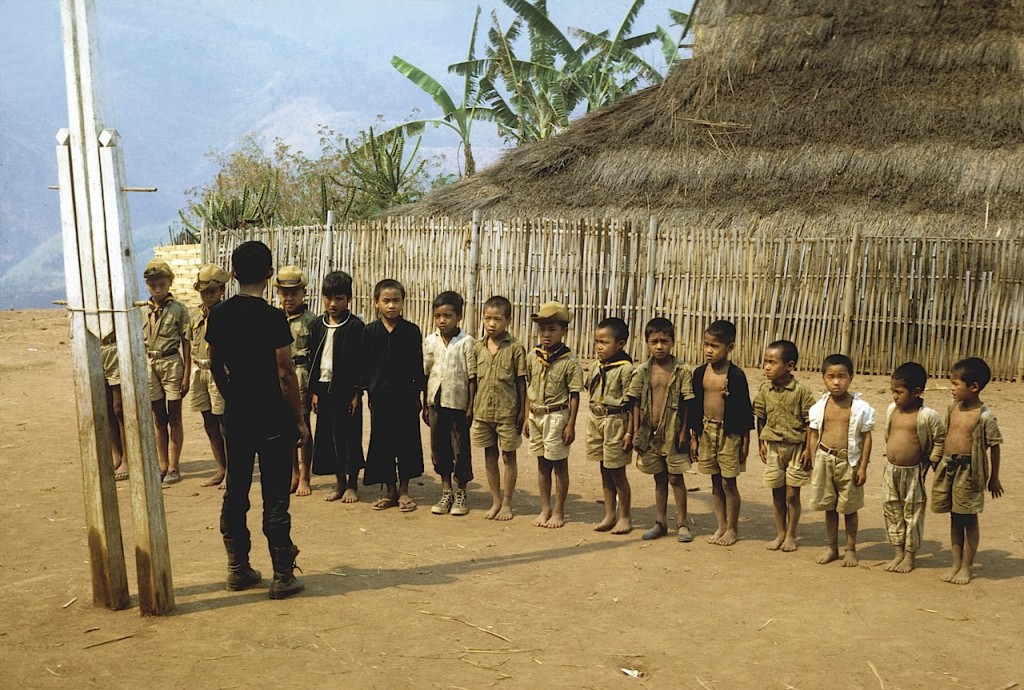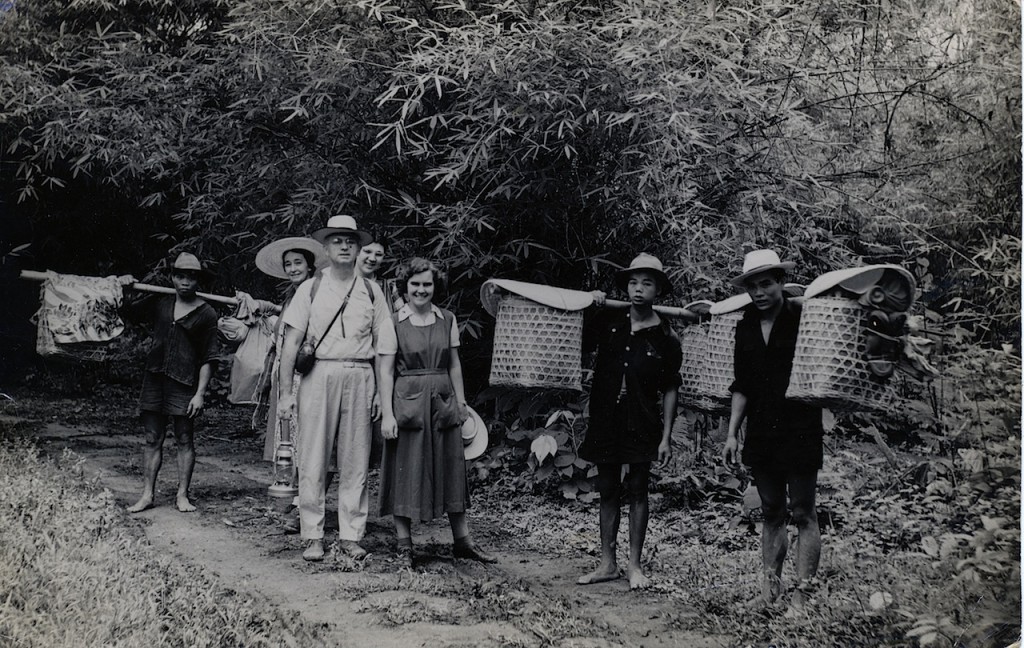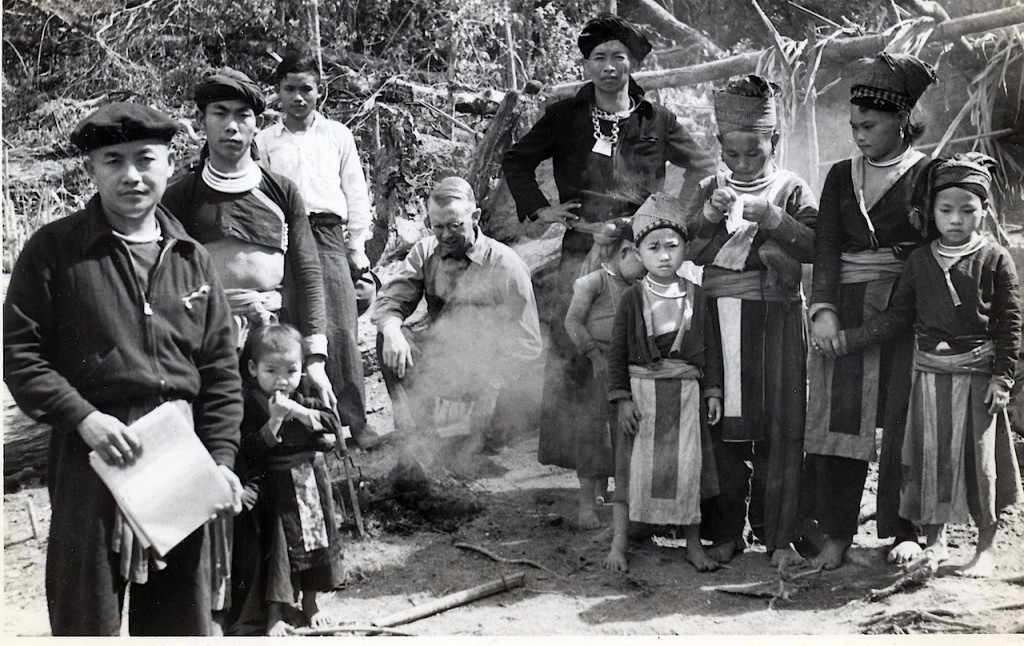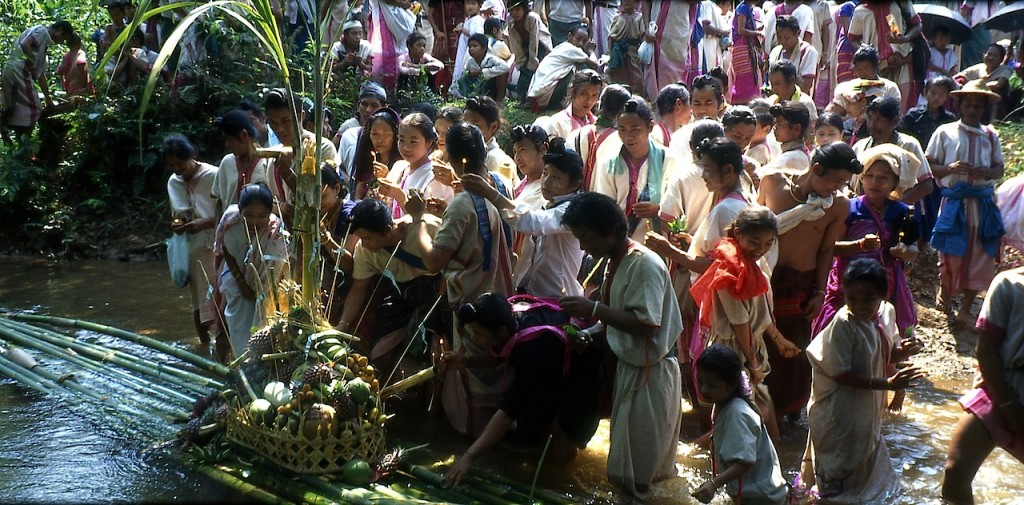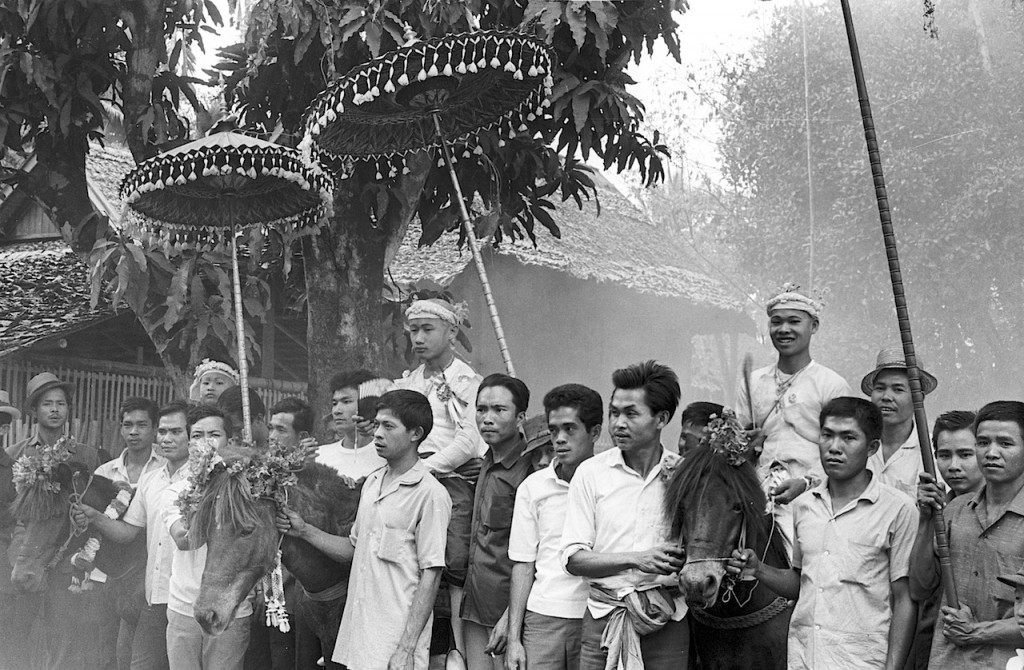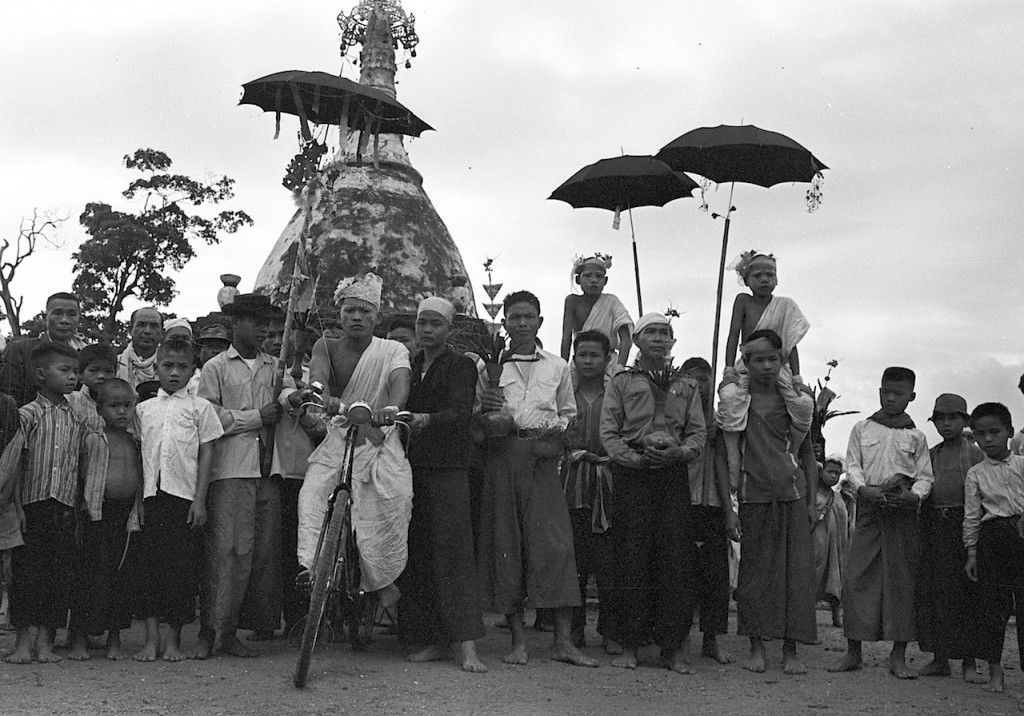Photograph Exhibition
On the beaten track. A half-century of photography among highlanders of Northern Thailand.
& Book
Picturing Highlanders: A half-century of photography in Northern Thailand – Pictures selected and edited by Olivier Evrard and Prasit Leepreecha, CESD & IRD, Chiang Mai, 2013, 151 p., with 242 photographs. Texts and captions in English and Thai.
The photograph exhibition On the Beaten Track started in Chiang Mai on 9 August 2013, at the Chiang Mai University Art Center. It will stay open until the 25 August and will then travel to Chiang Rai, Bangkok and Phuket during the forthcoming months[1]. In 2014, the exhibition will go to Laos and, possibly, also to Australia for the Thai Studies conference in April 2014.
This exhibition offers a glimpse on the photographic archives available at the Centre for Ethnic Studies and Development (CESD) of Chiang Mai University. The CESD has a collection of more than 60,000 digitized images of photographs taken in the last 60 years by various actors working among northern Thailand’s minority groups: ethnographers, civil servants, travelers, developers, missionaries. This collection is unique in Thailand for its size (more than 60,000 images), its geographic and ethnographic focus, and its time span (the images cover the period between early 1950s and the present). It owes its existence to the historical context of the development of anthropology in northern Thailand as well as to the personal dedication of the researchers of the CESD and the financial and technical support they received from various institutions[2].
The study of highland populations developed more slowly in northern Thailand than in regions under direct colonial rule, such as Burma or Vietnam for instance. Things changed radically after the Second World War. Most of the highland areas of Southeast Asia, including Yunnan, became largely inaccessible for survey or fieldwork. Civil or international conflicts that erupted during the decolonization and Cold War periods were followed by two decades of nearly complete closure under communist rule. By contrast, the highlands of northern Thailand remained relatively open for Western anthropologists тИТas well as for the missionaries who had fled the neighbouring countries. Simultaneously, the Thai State became more eager to secure its borders and to effectively control its geographical and cultural margins. It launched highland development programmes to solve what was then labelled the “hill tribe problem”. These programmes involved population censuses, merging or resettlement of ethnic villages, constructions of public infrastructures (roads, markets, schools, health centres), agricultural innovations and campaigns for opium eradication. This is the context in which Western anthropologists, as well as development experts, worked alongside Thai scholars and civil servants, introducing new techniques and gathering valuable ethnographic data, including numerous photographs.
Most of the written and visual the archives emerge from the Tribal Research Institute (TRI), first established as “Tribal Research Centre” in 1965 within Chiang Mai University under the Ministry of Interior in a time when the cold war was beginning to boil in the hills. The TRI was dissolved in 2002 and its archives were moved to the Tribal Museum. They included 81 reels of 16mm films, 300 black and white pictures and more than 2,000 colour photographs and slides[3]. In 2005, CESD researchers, Dr Prasit Leepreecha and Dr Kwanchewan Buadaeng, started to digitize this collection of photographs[4] as one of the programs launched with Dr. Olivier Evrard, an anthropologist from the Institut de Recherche pour le Développement (IRD, France). Together, they broadened the spectrum of the initial collection by collecting new images from the private collections of other anthropologists (Peter Hinton, Charles F. Keyes, and Jacques Lemoine to name a few) as well as from missionaries who had operated in Thailand. Finally, they also included some contemporary photographs from Laos taken during more recent fieldwork in that country.
The exhibition itself offers a selection of about 40 snapshots selected with scientific interest and aesthetic quality in mind while the book printed for the occasion includes six times this number, mostly in colour. It is divided into 12 sections, each introduced by one page of text and completed by extensive captions in Thai and English: 1. Moving and Settling; 2. Hunting and Fishing; 3. Farming; 4. Praying; 5. Crafting; 6. Playing; 7. Trading; 8. Connecting; 9. Fighting; 10. Converting; 11. Schooling; 12. Claiming and Staging. It aims for a wide audience, including members of local communities, some of whom were associated to the writing of the captions. It is conceived as a first step toward a visual and reflexive history of anthropology in the highlands of Thailand.
Image 1: Ban Dongluang, Mae Sariang district, Mae Hong Son province (1968); Karen men enjoys some rice whisky after sowing the fields. Photograph: Peter Hinton (courtesy Elizabeth Hinton).
Image 2: Ban Dongluang, Mae Sariang district, Mae Hong Son province (1968); Karen lady weeding rice in swidden fields. Photograph: Peter Hinton (courtesy Elizabeth Hinton).
Image 3: Ban Huey Luang, Mueang District, Tak province (1961); Two hunters bring a dead leopard back to the village. Photographer: Don Rulison (courtesy of Enabel Rulison).
Image 4: Ban Saenchai, Mae Fah Luang District, Chiang Rai province (1964); While Akha women wear headdresses, Akha men wear silver necklaces if their family is rich enough to afford them. Photographer: Lucien Hanks (courtesy of Peter Hanks).
Image 5: Ban Huey Lueang, Mueang district, Tak province (1964); Thai official of the Hill Tribe Socio-Economic Survey team showing his notebook to local villagers. Photograph: Hans Manndorff.
Image 6: Ban Namtuang, Mae Charim District, Nan province (1974); The two young Hmong men were trained by the Thai army to search for and kill communist insurgents in Nan province. During their free time, they pay a visit to the girl working in the fields. Photographer: unknown; courtesy of Tawatchai Charuprapatson.
Image 7: Sayaburi province, Laos (1964); A young Hmong soldier from the Lao Royal Army with his friend proudly exhibits an army rifle. In the background, his father looks at him with melting eyes while his brother is obviously worried by the picture. In the centre, between the two young soldiers is Vang Geu, a Hmong student trained as an agronomist in Phnom Penh who was Jacques Lemoine’s first guide and interpreter in Laos. Photograph: Jacques Lemoine.
Image 8: Phetchabun province (1979); Communist insurgents, both ethnic (grey shirts) and Thai students from Bangkok (white shirts) posing for picture with their weapons. The Communist Party of Thailand set up bases in remote areas throughout the country from early 1960s to early 1980s. Photographer: Unknown, courtesy of Yuepheng Xiong.
Image 9: Ban Prang, Pua district, Nan province (June 1967); Air America helicopter evacuates villaegrs from fighting areas in the highlands toward a resettlement site in the lowlands. Photographer: Imogene Williams.
Image 10: Ban Prang, Pua district, Nan province (1965); Teng was one of the ethnic students based at the Christian Hostel. The picture is taken in early morning before he leaves for school. Photography: Imogene Williams.
Image 11: Ban Phami, Mae Sai district, Chiang Rai province. Raising the Thai national flag before the beginning of class in a Border Patrol Police school in an Akha village. Photographer: Lucien Hanks (courtesy of Peter Hanks).
Image 12: Chiang Mai province (1954); John Kuhn, a missionary from OMF (formerly Overseas Missionary Fellowship and before 1964 the China Inland Mission), travels from Chiang Mai to Taungoo in Burma with his family and their Thai porters. He is the author of several books about ethnic groups in Thailand including his last one, Ascent to the Tribes: Pioneering in North Thailand (1956). Photographer: one of the Kuhn’s family members, courtesy Enabel Rulison.
Image 13: Ban Nam Khek, Phitsanulok province (1955); Ernest E. Heimbach, an OMF missionary, is burning the spirit objects of a Hmong family before their baptism. He is the author of a Hmong-English dictionary published in 1966. Photography: Ernest E. Heimbach’s wife, courtesy of Enabel Rulison.
Image 14: Ban Letongku, Umphang district, Tak province (March 2006); Bu Ata ritual among the Talaku Karen. Villagers load a bamboo raft with fruits, home-made sweets and candles and let it float downriver. They worship the lord of water and asks for its blessing for the new agricultural year. This ritual is similar to the Loy Kra Thong festival organized among the Thai but it is here conducted by the whole community at once. Photographer: Witoon Buadaeng.
Image 15: Ban Khapuang, Mae Sariang district, Mae Hong Son province (March 1968); Ordination: procession of the “jewel childs” (hae luk kaeo) among Shan villagers. Photographer: Charles F. Keyes.
Image 16: Ban Pa Mak, Mae Sariang district, Mae Hong (June 1968); S’gaw Karen village: procession of the “jewel child” (hae luk kaeo) approaching stupa. Photographer : Charles F. Keyes.
Footnotes
[1] Schedule of the exhibition:
1. Chiang Mai Art Cultural Center, from 9/08/2013 to 25/08/2013;
2. Chiang Rai at the Chiang Rai History Museum, from 10/09/2013 to 24/09/2013;
3. Bangkok, at the Alliance Fran├зaise, from 31/10/2013 to 17/11/2013;
4. Phuket at the Prince of Songkla University, from 27/11/2013 to 21/12/2013.
[2] This project benefited from the financial support of various institutions since 2005: Chiang Mai University and IRD at first stance, but also the University of Washington, Seattle, under a project entitled “Digital Archives of Research in Thailand” (DART, www.dartproject.org). The exhibition and the editing of the book were funded by the Institut Fran├зais (www.institutfrancais.com), IRD (www.ird.fr), CESD (www.cesd.soc.cmu.ac.th), as well as from the Regional Center for Social Sciences and Sustainable Development (RCSD, www.rcsd.soc.cmu.ac.th), under the framework of its participation to a European-funded research project on national and regional integration in Southeast Asia (Seatide, www.seatide.eu).
[3] For a detailed account on the Tribal Research Institute and its role in the development of anthropology in Thailand, see Kwanchewan Buadaeng, 2006, “The Rise and Fall of the Tribal Research Institute (TRI): ‘Hill Tribes’ Policy and Studies in Thailand”, Southeast Asian Studies (University of Kyoto, Japan) 44(3): 359-83.
[4] TRI archives also included several thousands of newspaper articles, in English and in Thai languages, which our team digitized and made accessible on CESD website: http://www.cesd.soc.cmu.ac.th/2012/index_en.php.
 Facebook
Facebook  Twitter
Twitter  Soundcloud
Soundcloud  Youtube
Youtube  Rss
Rss 